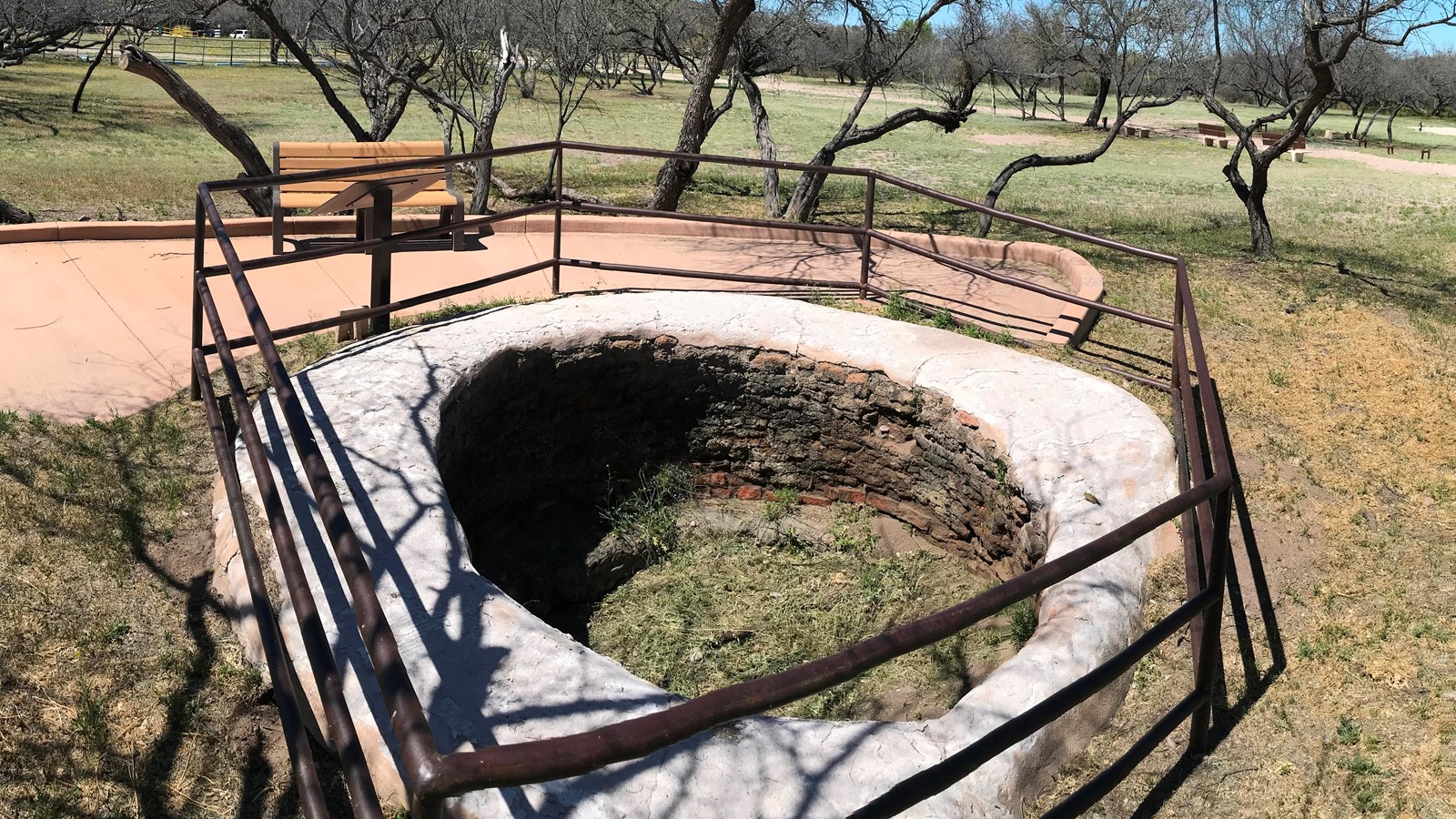Last updated: October 10, 2024
Place
Tumacácori Mission - Lime Kiln

NPS Photo
Benches/Seating, Historical/Interpretive Information/Exhibits, Wheelchair Accessible
Most of the mission structures are made from sun-dried adobe bricks. A soil mixture would be mixed with water into a thick paste and then pressed into rectangular wooden forms and left in the sun to dry. This efficient style of earthen technology goes back thousands of years, but requires constant maintenance. Moisture, either from the ground or from precipitation, will erode sun-dried adobe bricks, rendering the structure unstable.
The Spanish favored limestone plaster as a protective coating on their adobe buildings. Many tons of limestone rocks were gathered and carted to the mission’s lime kilns. A fire was built under a metal grill and high temperatures “cooked” the limestone over several days until it could be hammered into a fine powder. That powder was then made into a paste using water and sand, which was later troweled onto on the exposed adobe brick walls.
Gathering stone, mixing plaster, and coating the large structures required the labor of many workers. For the O’odham, the kiln probably represented a significant change in their lifestyle. Previously, they lived with a changing landscape, in buildings that changed with it. The European worldview prioritized permanence and defiance of natural weathering. This shift would shape the way that people across the region live and think for centuries to come.
